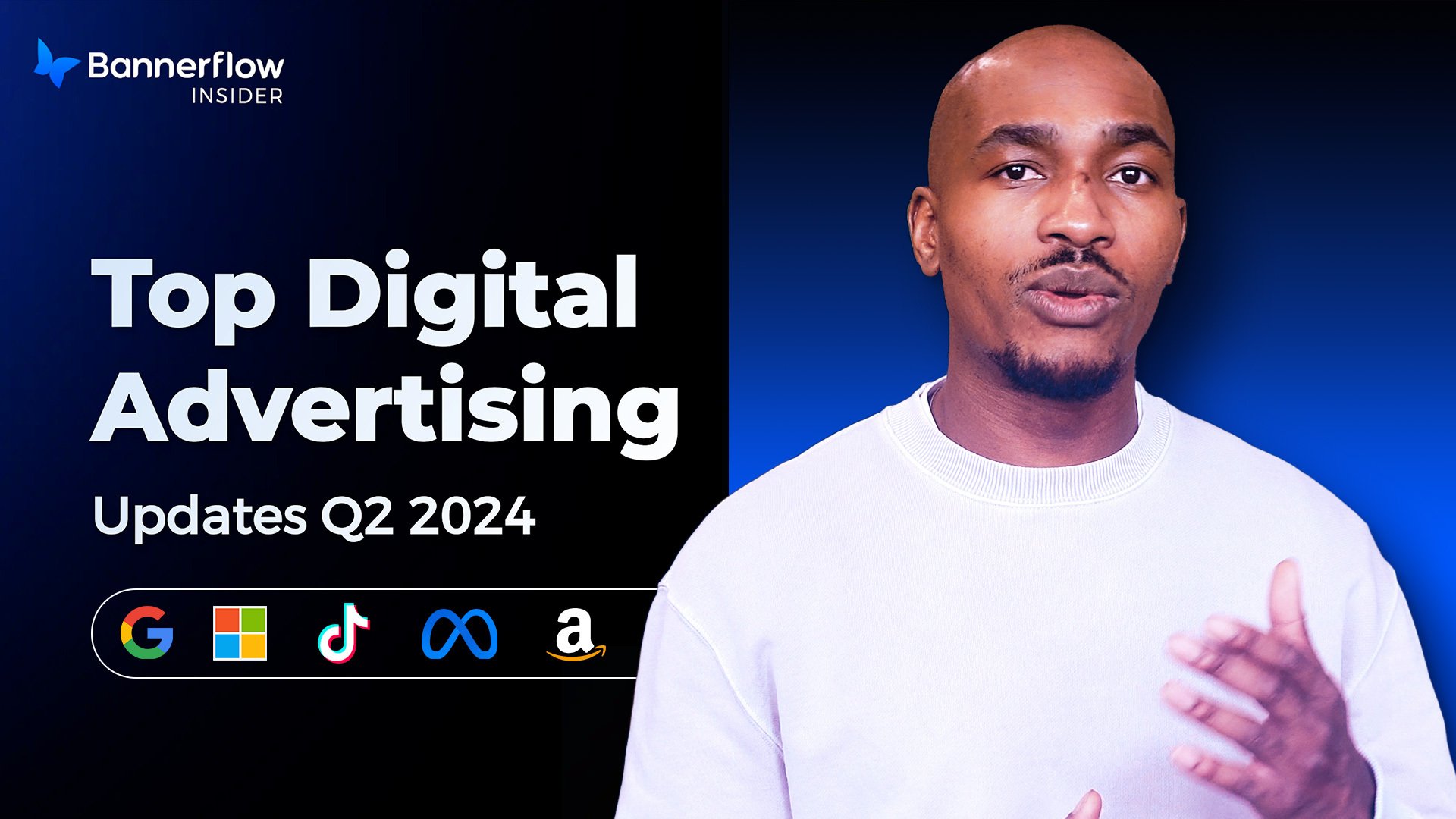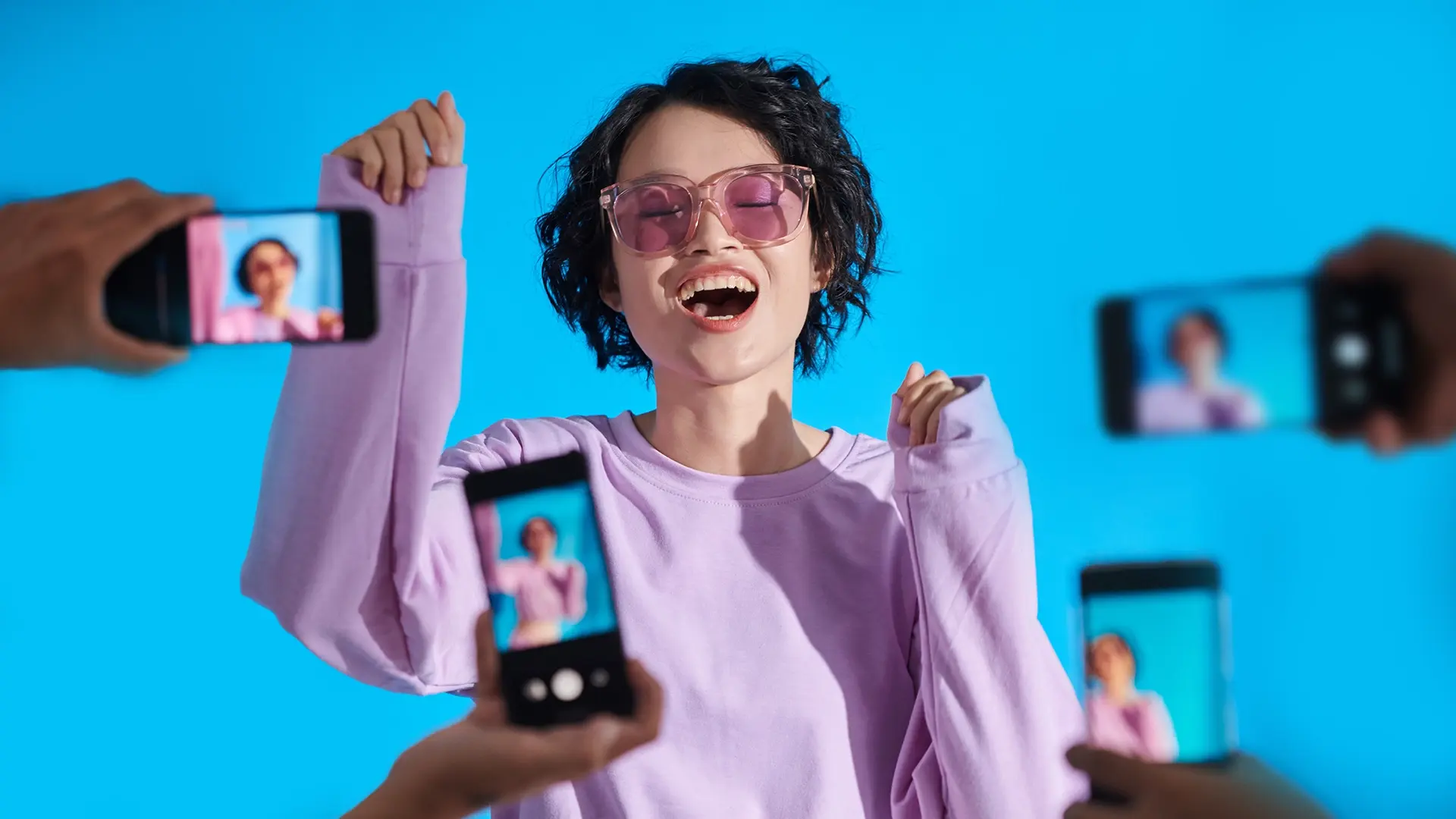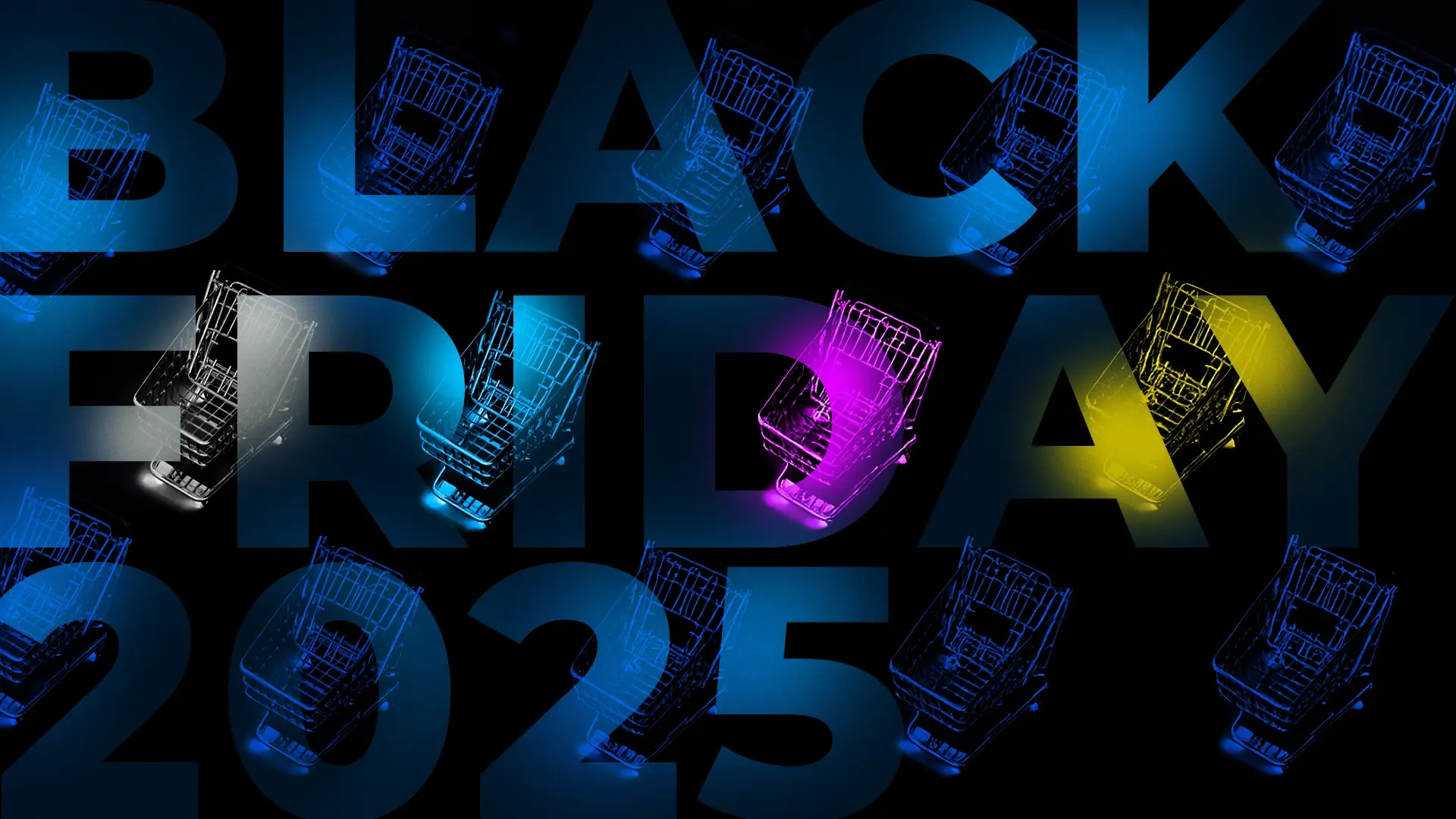Hello, and welcome back to Bannerflow Insider where we explore the cutting-edge developments in the digital marketing landscape. In this blog, we will review some of the digital advertising platform updates that marketers should prioritise in Q2 2024.
These updates from Google, Microsoft, Amazon, TikTok, and Meta paint a promising picture for digital advertisers.
The common thread through all these changes is a shift towards more precise targeting, improved efficiency through AI, and a deeper understanding of consumer interactions.
For marketers, staying abreast of these developments is key to leveraging the dynamic digital marketing landscape for optimal results.
Q1 saw Google make some of the most significant changes to its search with the company’s latest core update marking a seismic shift to the SEO industry.
The latest update has introduced a variety of algorithmic changes that will see several poor, low-quality sites deindexed from Google Search.
That being said let's take a look at some of the other significant changes to take into account for Q2 and perhaps the rest of the year.
- Google Releases Updates to Conversion Tracking
Google recently unveiled updates that are set to refine how events and conversions are named within GA4, marking a significant shift in how data flows and conversions are identified.
At present, GA4 receives a stream of events, from which users highlight the most pivotal ones as conversions.
These conversions then feed into Google Ads, serving as the basis for campaign optimisation and reporting.
This setup allows for cross-channel conversion tracking across both GA4 and Google Ads, though discrepancies between the two have often led to confusion and concern.
With the latest changes, Google aims to bring more uniformity to the reporting of events and conversions.
The term "conversions" within GA4 will transition to "key events," while the traditional notion of conversions will be redefined to specifically refer to those events that are integrated with Google Ads. This reclassification ensures that conversions maintain consistent measurement settings and processing between the two platforms.
For advertisers and marketers, this adjustment signifies the end of inconsistent conversion reports between GA4 and Google Ads. It also introduces a distinction in how events, key events, and Google Ads conversions are monitored and reported.
It's crucial to remember that GA4 is founded on event-based analytics, where all interactions, such as page views, scrolls, and clicks, are categorised as events.
The essential events you choose to track, like lead submissions or inventory searches, become your "key events." Meanwhile, the events selected for optimisation in Google Ads are recognised as conversions and are set up directly within the Google Ads interface.
This streamlined approach not only enhances reporting accuracy but also clarifies the role and measurement of conversions and key events within the broader advertising ecosystem.
- Google Introduces New API for its marketing platform.
Google Marketing Platform recently introduced a new API, offering organisational administrators more control. This update allows for the upgrading or downgrading of properties between standard and Analytics 360, as well as linking Google Analytics accounts to organisations.
This enhancement is pivotal for marketers, simplifying the tracking of campaigns and providing deeper insights into prioritized properties for more effective campaign optimisation.
Additionally, organisation details have been integrated into the accounts list within the Admin API. This creates a seamless link between the existing Admin API and the newly launched Google Marketing Platform Admin API, streamlining administrative tasks.
Google Marketing Platform is a comprehensive suite that merges DoubleClick's advertising services with Google's advertising and analytics tools. It's designed to facilitate the planning, buying, measuring, and optimising of digital media and customer experiences in one centralised location. Google asserts that this platform enables users to forge quality customer connections, uncover deeper insights, and achieve superior marketing outcomes.
However, accessing these advanced tools requires specific certifications. Companies must have certified specialists, either in-house or through contractors, to leverage the full capabilities of the Google Marketing Platform.
Microsoft Advertising
Microsoft saw its largest quarter as a company to date on its way to becoming a $3Trillion company. However, despite the rise in search and news advertising revenue marks a slowdown in growth in comparison to the previous quarter’s 10% increase. With this in mind, its perhaps no surprise that the majority of updates released by Microsoft in 2024 are aimed at bringing their advertising product closer to that of their competitors with the hope of increasing their market share. Let’s dive into these updates and what they may mean for you.
- Microsoft unveils key Performance Max updates
Microsoft has outlined the rollout schedule for new automated features in Performance Max, including conversion value rules and video assets. The company also detailed the phase-out plan for Smart Shopping campaigns starting in Q3. This move indicates Microsoft's ambition to match Google Ads' PMax, potentially attracting advertisers to switch their budgets to Microsoft.
For Q2, Microsoft plans to introduce several enhancements to PMax such as, Page feeds for URL extension, Conversion value rules and brand exclusions at the campaign level, Options to block auto-generated text assets and automate calls to action, and much more.
Additionally, an Audience Exclusions feature is expected to launch in PMax this summer, though a precise date was not provided.
Looking ahead, Microsoft intends to add more functionalities to PMax, such as a cost-per-bidding strategy, video assets, support for experiments, and forecasting tools. Details on the timing of these additions remain unspecified.
The transition from Smart Shopping campaigns to PMax will begin with direct email notifications in April, with the full migration occurring from June to September in stages.
Microsoft will automatically upgrade campaigns imported from Google Ads, including those initially set up as smart shopping or DSA campaigns, to PMax campaigns. This process will occur gradually over the coming weeks. For users of third-party platforms not yet supporting PMax, imports will continue as smart shopping or Dynamic Search Ads (DSA).
Microsoft's statement highlights the addition of new capabilities to Performance Max, promising further updates on available features and success stories from advertisers leveraging PMax on Microsoft Advertising.
- LinkedIn introduces Dynamic UTMs for tracking
LinkedIn has introduced a new feature aimed at enhancing campaign performance tracking in a world moving away from third-party cookies. Released at the end of March, Dynamic UTMs are available globally to all users, streamlining the process of integrating custom tracking elements into campaign URLs for more precise tracking.
Traditionally, creating UTM parameters for campaigns was a manual task. Dynamic UTMs automate this, simplifying the tracking process. UTM parameters, or Urchin Tracking Module parameters, are snippets of text appended to the URL of an ad. They enable advertisers to monitor the origins of ad clicks, such as identifying the clicks coming from a particular campaign or ad placement.
The relevance of UTMs has grown, particularly as the digital advertising landscape shifts towards privacy. UTMs provide a reliable method for campaign performance analysis without depending on third-party cookies or IP addresses.
Manually creating UTMs, however, has been cumbersome, inefficient, and error-prone. LinkedIn's new Dynamic UTMs aim to resolve these issues. The feature supports both static and dynamic URL parameters, allowing for comprehensive and flexible tracking setups.
When adding a URL parameter, users must specify both the key and the value of the parameter. This innovation is poised to make campaign tracking more efficient and accurate for marketers.
Amazon Advertising
Amazon's ad revenue for Q3 2023 reached $12.06 billion, marking a substantial 26.3% increase from the same period in 2022. This figure has seen Amazon’s share of U.S. search advertising stands grow to nearly 20%, marking it as a significant platform for advertising spend, especially for those selling or considering selling on Amazon.
Let's look into what new tools Amazon has added this year to improve its advertising offering.
- Amazon Enables Sellers to generate listings from AI using URLs
Amazon has enhanced its platform for sellers by introducing generative AI-powered features that streamline the listing creation process. Now, sellers can easily create Amazon listings by providing the URL of a product already listed on their website. This tool, currently available in English for U.S. sellers, utilises AI to extract details from the product’s webpage and automatically generates a listing on Amazon.
This development builds on Amazon’s previous innovation, which allowed sellers to generate listings from minimal text or an image. “By simply providing a URL, our generative AI-based features will automatically parse it to create high-quality, engaging listings on Amazon,” the company stated in a blog post.
In a related advancement last October, Amazon introduced a tool enabling advertisers to create backgrounds for product images through text prompts, noting that items with a contextual background saw a 40% higher click-through rate than those with a white background.
Amazon’s latest announcement highlighted that over 100,000 sellers have utilized its generative AI tools, with 80% of sellers adopting the AI-generated suggestions. This move by Amazon is part of a broader trend where companies like Google, eBay, and Shopify have also explored AI-powered tools to enhance product advertising and retail experiences, focusing on product imagery and listing generation.
- European Court of Justice forces Amazon to publish Ad Library.
Following a recent ruling by the European Union's highest court, Amazon is now required to provide publicly accessible information about the advertisements on its platform, aligning with the Digital Services Act's (DSA) transparency mandate.
The DSA, which seeks to govern online platforms and ensure algorithmic accountability, has been applicable to Amazon since late August 2023. While other major tech entities have adhered to the DSA's transparency requirements for ads, Amazon had initially challenged its classification under the DSA and secured a provisional halt on the ad transparency requirement.
However, the CJEU found that the European Commission, responsible for monitoring Amazon's DSA compliance, was not allowed to present its case, violating the principle of fair hearing.
The CJEU dismissed Amazon's request for interim measures, noting that while Amazon's concerns might be significant, they must be weighed against the EU lawmakers' objectives and the potential delay in compliance, which could undermine the DSA's goals.
This ruling not only emphasises the importance of adherence to the DSA but also marks a significant step towards greater transparency on digital platforms, requiring Amazon to disclose more about its ad practices. It also signifies a broader push within the EU to regulate large online platforms, with potential consequences for non-compliance, including substantial fines.
TikTok
In Q1 2024, TikTok saw a major shift as Universal Music Group (UMG) pulled its music catalogue from the platform due to unresolved licensing negotiations. This move not only restricted creators from using popular songs but also silenced existing videos, causing user frustration. Despite these challenges, it’s expected that an agreement will be reached. Meanwhile, TikTok continued to grow, with increases in both user base and revenue.
Here are some of the key updates for advertisers to have in mind going into Q2.
- TikTok Launches Search Trends
TikTok has launched "Creator Search Insights," a new feature designed to help creators identify trending search terms on the platform, thereby aiding them in crafting content that resonates with current audience interests. By searching for "Creator Search Insights" within the app, creators gain access to data that could significantly impact their content's visibility and engagement by aligning with trending topics.
This tool allows creators to sort search topics by "trending" to view popular searches platform-wide or "for you" to see searches tailored to their specific content niche. Creators can view a list of top search terms along with their popularity percentages and have the option to save these terms for future reference.
Additionally, Creator Search Insights offers the ability to discover "content gap" topics—highly searched terms with limited content available on TikTok, presenting unique opportunities for creators to fill these gaps.
TikTok plans to integrate search value into its Creator Rewards Program, incentivising content creation around popular search topics to potentially increase creators' rewards and recognition.
The introduction of Creator Search Insights has been positively received within the marketing community, as evidenced by discussions on platforms like LinkedIn, where
professionals praise TikTok's emphasis on search as a tool for content strategy and its simplicity compared to traditional analytics tools.
TikTok aims for Creator Search Insights to inspire creators to produce content that not only appeals to their audience's current interests but also enhances their performance and visibility on the platform. The company plans to make this tool directly accessible from the Creator Tools section in the Settings menu, further streamlining the content creation process.
- TikTok Releases Lead Generation Guide for Users
TikTok, in partnership with Hubspot, recently unveiled a comprehensive guide focused on optimising lead generation strategies on the platform. The 25-page manual delivers a wealth of actionable insights covering various aspects of lead generation, including form creation, engaging hooks, clear messaging, and compelling calls to action.
The guide serves as a valuable resource, offering reliable, TikTok-sourced best practices for enhancing lead generation. Whether you're confident in your lead gen skills or looking for new strategies, this document is poised to illuminate potentially overlooked aspects. Let’s take a look at the key insights from the report.
Lead Generation Forms: Tips include visual enhancements like adding logos and images to make forms more attractive, limiting questions to a maximum of six to avoid overwhelming prospects, and incorporating logic settings for a personalized form experience. Emphasising security through privacy policy links and concluding with a thank you message is also advised for a polished, trust-building form.
Hooks: TikTok suggests leveraging educational content in fields such as finance and real estate to attract viewers by showcasing the benefits of your product or service. Addressing viewers' challenges and presenting solutions can significantly increase engagement and purchase intent.
Messaging: After capturing attention, establishing trust with your audience through clear, memorable messaging is crucial. This involves succinctly conveying your product's value proposition and benefits, thereby enhancing brand credibility and interest.
Calls to Action (CTAs): The guide emphasises ending with a strong, clear CTA to motivate viewers to take the next step. Using memorable closing remarks, whether through text, voice-over, or graphics, ensures your message resonates with the audience.
TikTok's lead generation guide, with its direct-from-source insights and practical advice, is designed to empower creators and marketers to more effectively capture leads and drive engagement on the platform.
Meta
Meta’s impressive end to 2023 which saw their ad revenue increase by 23.8% in the final quarter compared to the year-earlier period. However, a tumultuous start to Q1 2024 may see them facing challenges to replicate that. The company has faced multiple lawsuits for actions such as inflating ad viewership as well as an outage that resulted in many advertisers overspending by thousands. Time will tell how this will affect them but in the meantime, let's see what newness they have introduced in Q1.
- Major Updates to Advantage+ and Shopping Ads
Meta has introduced new audience insight and targeting enhancements to its Advantage+ Shopping Campaigns, aimed at improving the way advertisers understand and reach potential customers. These updates offer detailed reports on audience demographics and enable targeting of individuals who have shown interest in products or services but haven't made a purchase.
Key features include the "engaged customers audience segment," which allows advertisers to identify consumers who have interacted with their brand or products without buying. This segment can be defined using custom audiences, enabling precise reporting and targeted advertising strategies.
Additionally, Meta's Ads Manager now categorises audience data into New Customers, Existing Customers, and Engaged Customers. This segmentation provides a clearer view of a campaign's reach and its effectiveness across different customer types.
The targeting capabilities within Advantage+ Shopping Campaigns have also been enhanced, allowing advertisers to specify engaged customers through custom audiences. This means advertisers can now more effectively target those who are aware of their business or have interacted with their products or services but have not yet made a purchase, potentially increasing conversions and improving overall campaign success.
Conclusion
That concludes our deep dive into the key updates from digital advertising platforms for Q2 2024. Please like, share and subscribe to our channel to stay up to date with more informative content.
Thank you for watching and we’ll see you in the next video.
Sign up for practical insights and tips to enhance your digital marketing efforts further.









